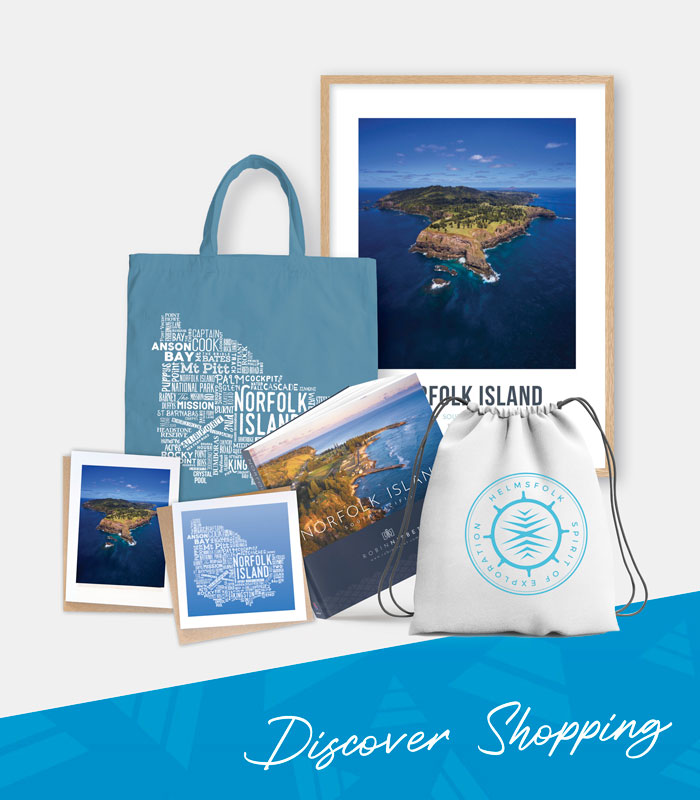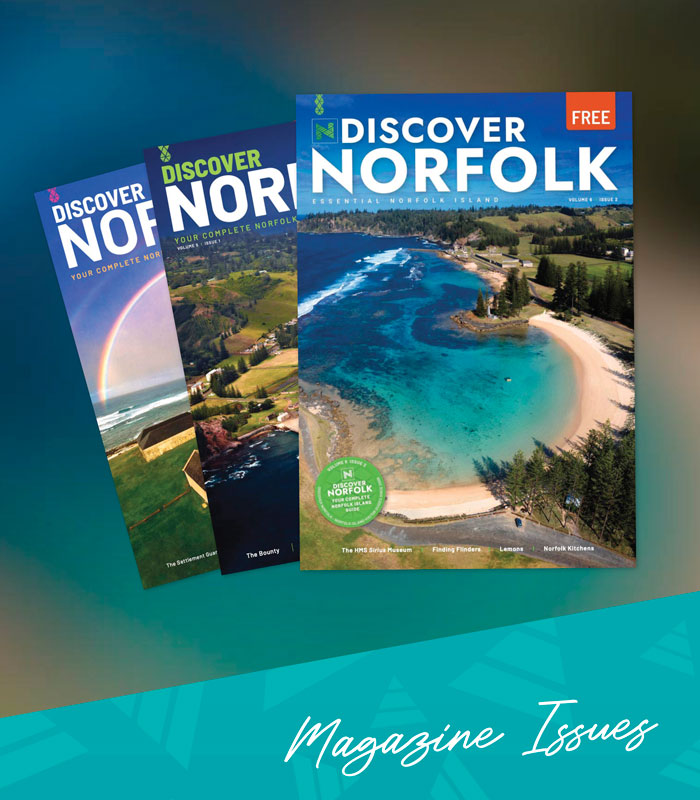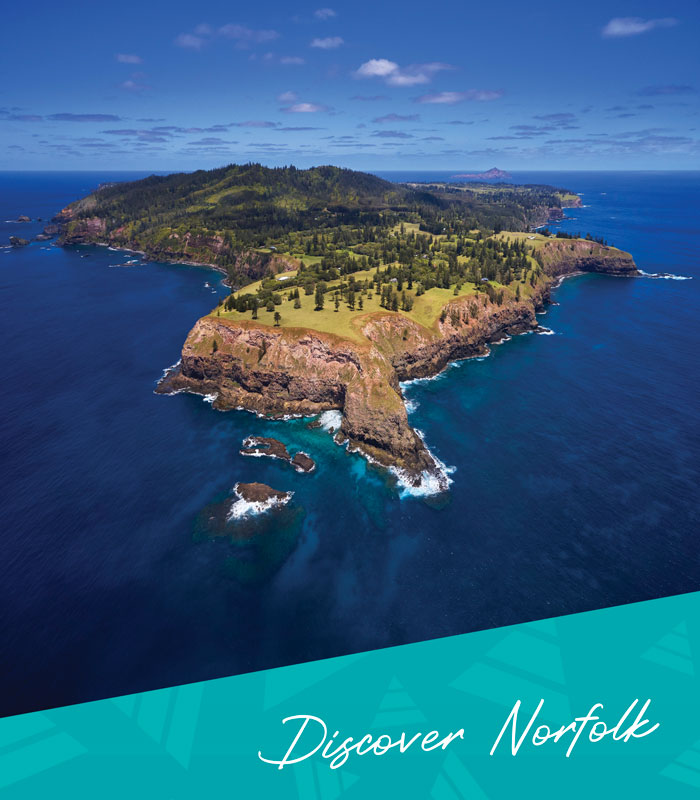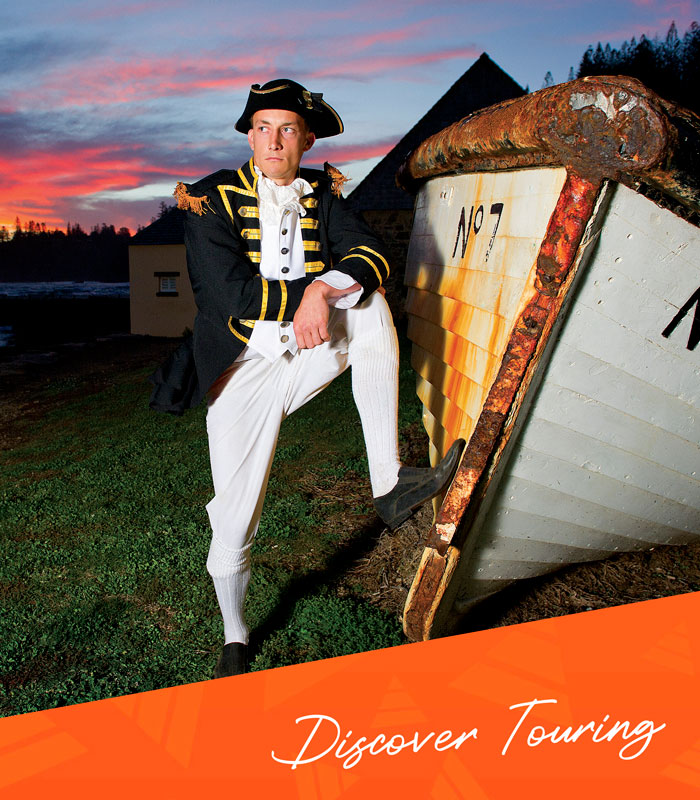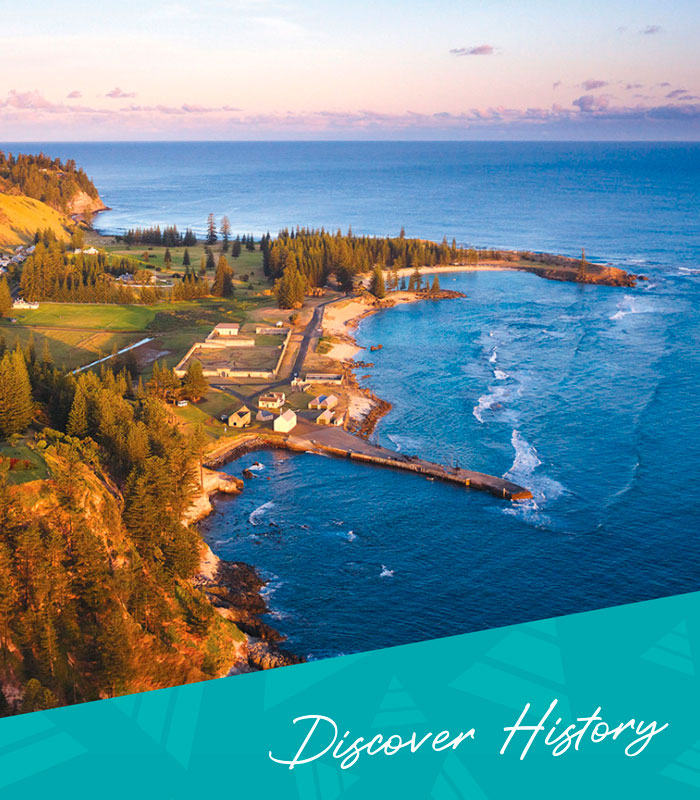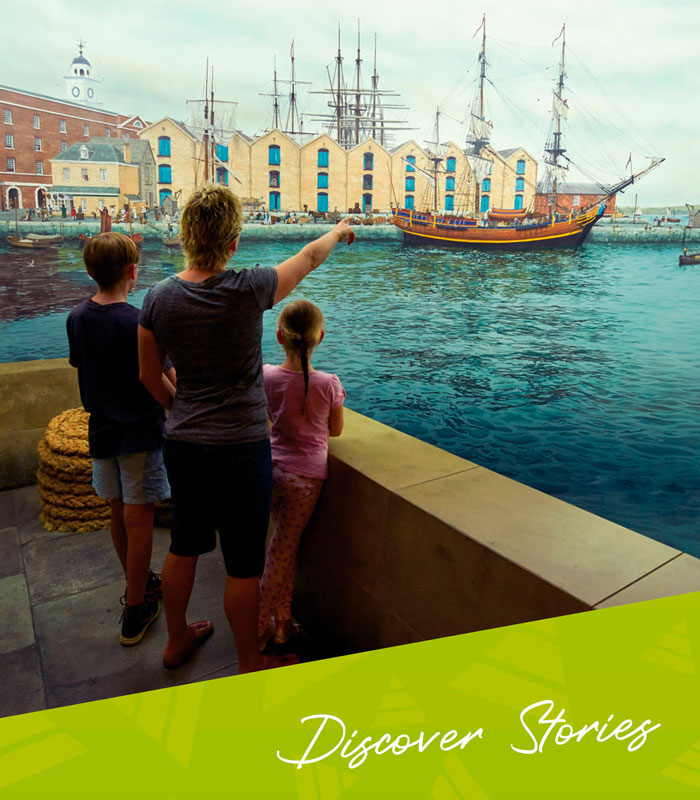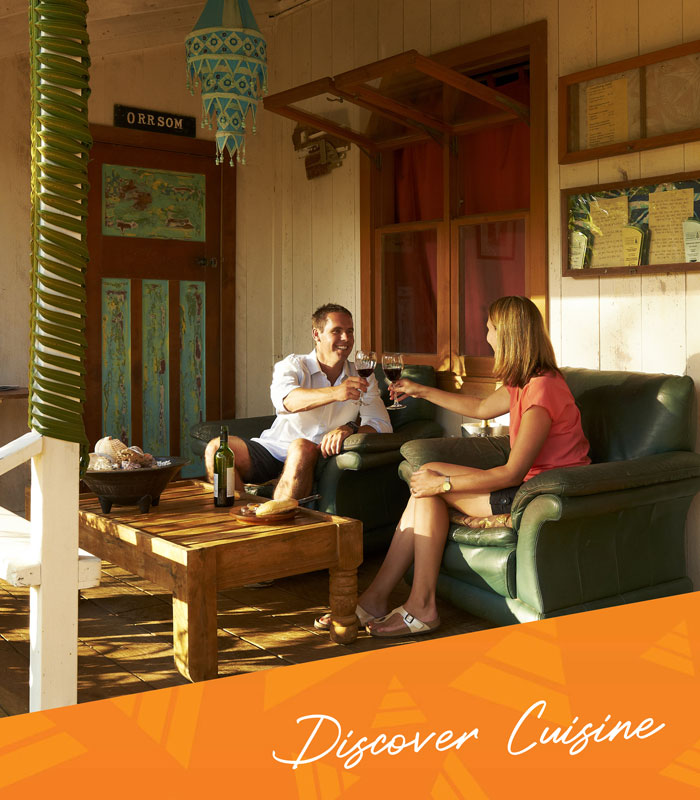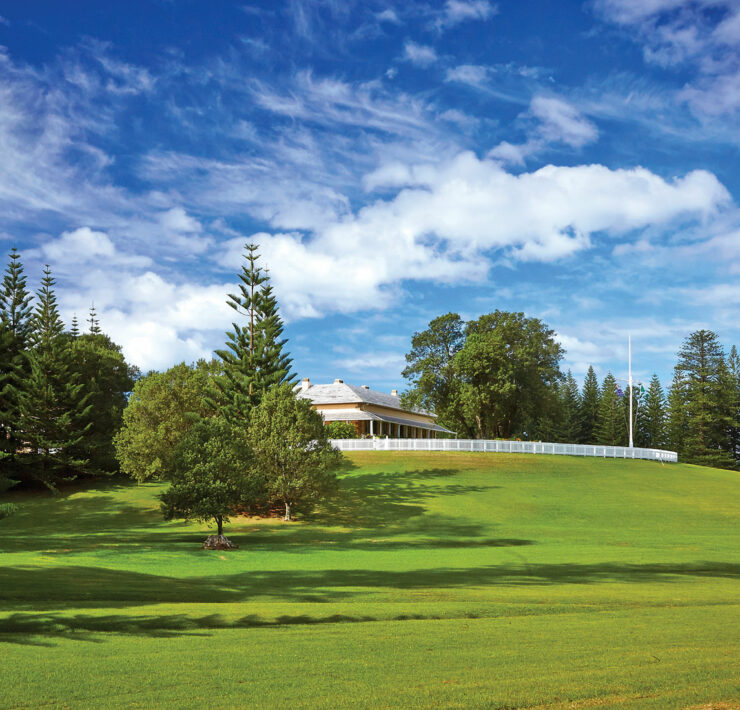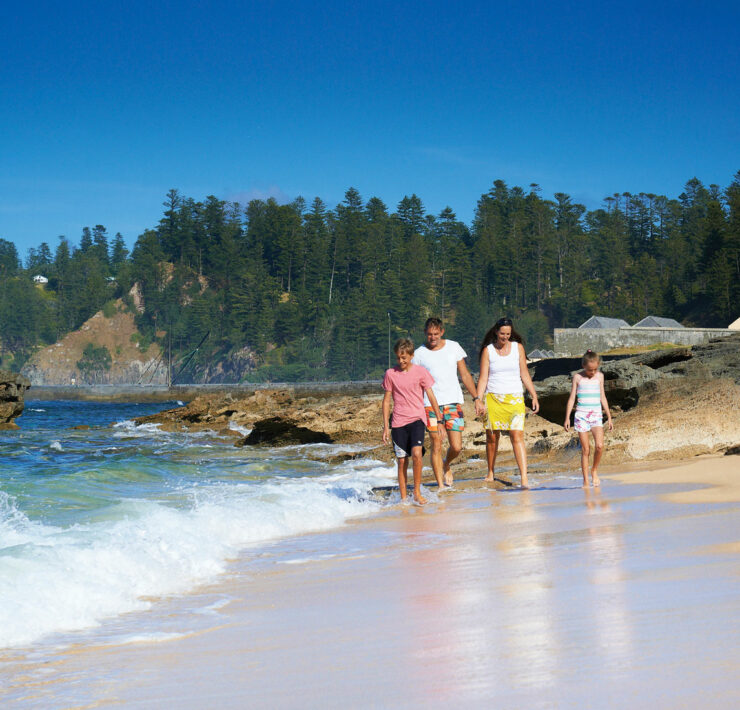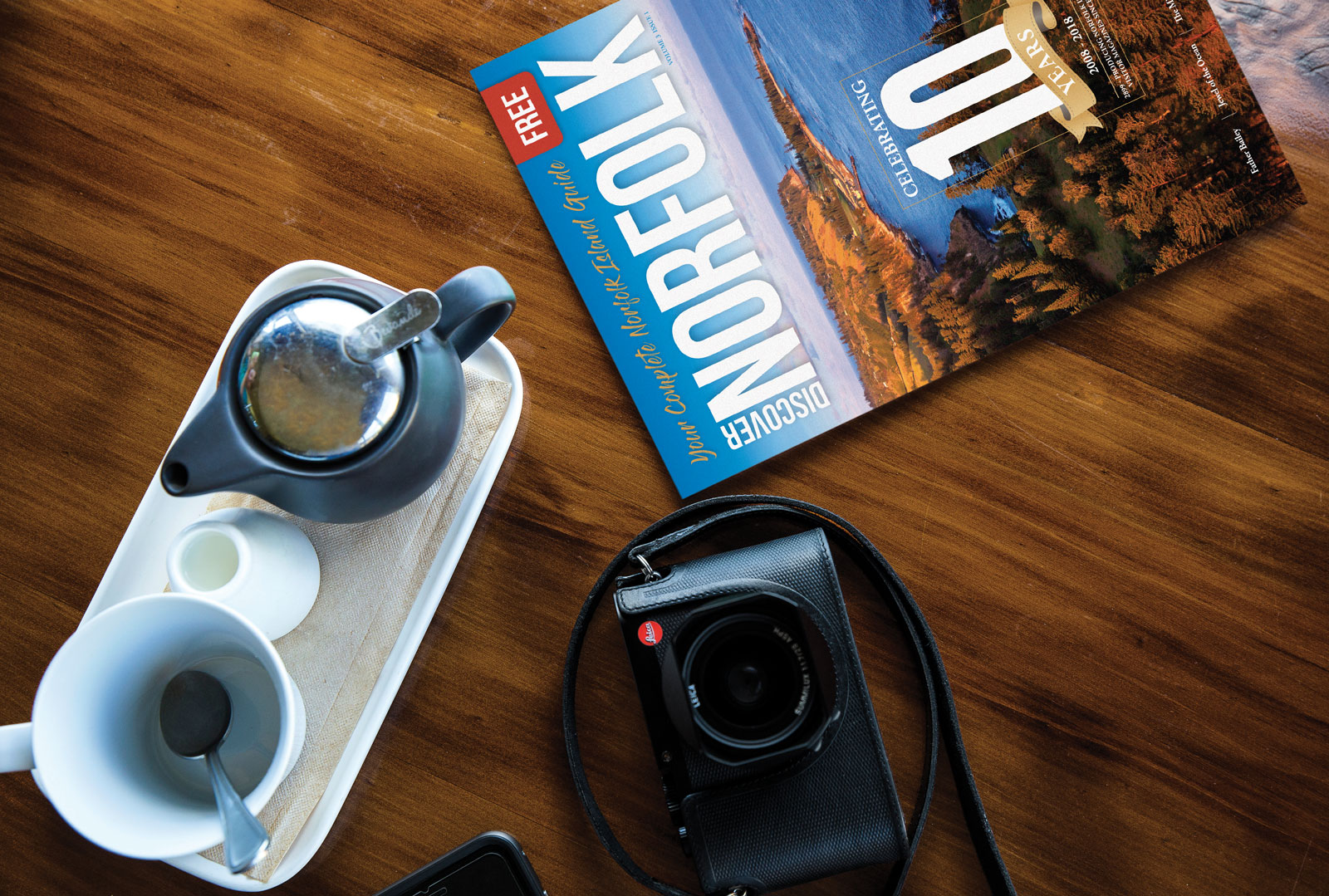Home » All Articles » Helmsfolk – Finding Flinders and the Norfolk Gin (Pt.2)
Helmsfolk – Finding Flinders and the Norfolk Gin (Pt.2)

Discover Norfolk Assisted Audio
In Part 1 of this article we introduced you to Helmsfolk – a company that has created an exciting new Norfolk Island-oriented gin. We covered a little of the history of gin, and where its popularity came from as well as the story of the colonial sloop Norfolk. Built on Norfolk Island, Norfolk had a short but legendary ocean-going tenure from 1798 to 1800. The vessel was built against orders and was confiscated by Governor John Hunter after its maiden voyage from Norfolk Island to Port Jackson (Sydney). The Norfolk was re-purposed for Matthew Flinders with George Bass and a small crew to attempt to circumnavigate Tasmania and prove that it was in fact an island. That voyage was a success and together Flinders, Bass and the Norfolk sailed into the maritime history books. It is one of many fascinating stories that make up a part of our shared and collective history and helped forge who we are today.
Sharing and celebrating the spirit of exploration of the great ocean voyagers is what lies at the heart of Helmsfolk. Telling stories is large part of what they do, but the journey from an inspiration to a bottle is also an adventure in itself. The branding and nuances of product development today are a large part of a product’s success. Forging a connection between the consumer and a product is pivotal, and finding the right suppliers, advice and expertise to bring those elements together can be a long and complicated process.
It’s sometimes difficult to fully pinpoint why a theme, a place, a style or particular genre resonates with a segment of any market, or why a specific product hits the correct touch points with a consumer. Why do some people like classical music and others country? Why do some choose Naples for a holiday and others Norfolk Island? The answer is what makes the world interesting and it’s what connects many of us and separates us at the same time: choice. If you are arriving on Norfolk Island for the first, fifth or fifteenth time, then there’s probably an element of choice involved. What you decide to do here, what tours you see and experience, and what you choose to eat and drink involves a freedom of choice. Today those that are fortunate enough to have that freedom should consider themselves lucky to have it in their lives. It is important to remember that many of the people that were part of, or affected by, the great ocean voyages in 18th and 19th centuries were not necessarily afforded that luxury.
Finding a tangible link and connection point to help tell the Norfolk’s story was a natural process for Helmsfolk with company owners Trina Shepherd and Robin Nisbet bringing a long track record of branding, marketing and Norfolk Island knowledge and experience to the product development stages. The complex part of the process was pulling all the parts together to get their unique and exciting product over the line. This isn’t step-by-step guide in how to get a new gin from A to Z, there simply isn’t the space for that, but Helmsfolk assure us it was a tough yet rewarding process, that included a minefield of red tape and logistical challenges. Having overcome many of those hurdles, they believe it makes the unique flavour of their Norfolk Gin taste all the better.
It’s an exciting time for gin globally and we are in a ‘Gin Craze Mk II’ of sorts. The original Gin Craze of the 1700s – by extreme contrast – was a dark time of tough living for many of London’s inhabitants who turned to the intoxicating spirit to escape the hardship of survival. Restriction of imports from abroad and licensing deregulation led to an unprecedented surge in gin manufacture. Literally thousands of ‘distillers’ began creating a rough and incredibly strong bootleg gin that plunged London into a drunken stupor. A drink that only a short time before was popular with politicians and royalty, rapidly became the tipple of the poor. It became such a problem that the government eventually intervened with a series of laws, regulations and taxes to bring the city under control – a struggle that lasted for many years due to the fact that the fundamental problems that lay beneath a period of such drunkenness were of course not simply founded in spirits regulations.
The parallels of today’s ‘Gin Craze’ exist in the fact that thousands of boutique distillers have emerged onto the spirits scene. They have aided the modern gin revival – the difference being that they are creating infinitely more refined, and incredibly well regulated, concoctions for the masses. The gins we drink today are a far cry from the intoxicant of 18th century London and they are used to share a love of stories, themes, feelings, flavours, and places.
Gin is made when a neutral spirit is put through a re-distillation process together with selected ‘botanicals’ – the name given to the collection of herbs, spices, seeds, plants, berries and more that give the spirits their flavour and character. At the heart of a gin recipe will be juniper – in fact without this core ingredient the end product cannot be called gin.
Finding the right collection and quantities of botanicals to imbue the gin with the essence you hope for requires time, experimentation and also the correct measure of expertise. Helmsfolk tirelessly researched botanicals and flavour profiles to come up with a unique recipe that would not only link the elements of the sloop Norfolk’s fascinating journey, but would appropriately reflect it and do it justice with a distinctive and charismatic flavour. To bring their gin to life Helmsfolk turned to a Sydney based distilling company with a proven track record, and over the following year, the Norfolk Gin was born.
The result is a London Dry gin with a citrus flavour profile from Norfolk Island Lemons – citrus jambhiri (more of that later in this issue) together with Tasmanian Pepperberry to give the gin just the right amount of kick. This is all balanced and softened perfectly with floral flavours which include Hibiscus and Elderflower together with a little Berry Salt Bush. In bringing together botanicals from Norfolk Island, Tasmania and the Australian Mainland, Helmsfolk created their own secret blueprint for a very robust gin that has a place in any liquor cabinet. It was a significant undertaking and investment of time, energy and funds, but the end result is that they can share the story of the sloop Norfolk through the art of distillation. They feel honoured to know that for years to come people will sit and enjoy a refreshing drop while contemplating Flinders’ achievements and the role Norfolk Island played in that unique part of maritime history.
Of course that’s not the end of the production journey. With a story, a recipe, and a fantastic product in hand, the next part of the equation was to package that and present Norfolk’s story in a tactile, fun and engaging way. A great product needs to go hand in hand with a great design, and so Helmsfolk got to work with their overarching company branding and label design to bring to life their two Norfolk Gin products – Original Strength (42% ABV Edition), and Crew Strength (57% ABV Edition).
Like each of the project’s parts it was equally important as the process before and after it. For the Norfolk Gin Helmsfolk chose a classic style bottle which is not unusual for a maiden spirits voyage, but they wanted to use the label design to create a point of difference. They spent a great deal of time thinking about texture and shape and what effect it has on the way you interact with the bottle, and what says about the product and the story being told. They settled on a textured stock which has the feeling of an old map or chart, and if you look at the label unwrapped from the bottle you can see that it is actually a rolling perpetual wave that flows around its circumference. The reason for this is to soften the flow of bottle edges and also to encourage you to rotate the bottle itself to discover the whole label. When you hold a bottle in your hands you’ll realise its actually quite engaging. Inside the label are the names of the destinations and recorded landmarks sighted or named in Norfolk by all those that sailed in her during her short, but deeply important history. Added to that, if you look to the left and right of the label you will see two very distinct shapes which have been die cut. Those shapes are the eastern coastlines of both Tasmania and Norfolk Island. Overlaid on one another, they symbolise how the stories of these unique island destinations are linked through the Norfolk and this special Norfolk Gin. It’s perhaps a bit quirky, but like the many stories behind the great ocean voyages and the vessels themselves, there’s so much more than we can often see on the surface, and Helmsfolk figured there was no better way to create a synergy with that. It’s sort of like a message in a bottle!
Bottling the essence of the Norfolk’s story has presented a fantastic opportunity for Helmsfolk to share a small part of the island’s vibrant history, but there remains no singular way to truly define Norfolk Island – it is a Pacific enigma with an intangible beauty that defies any one label or category. The fact is that akin to the great ocean voyages, the sum total of their collective histories will always be greater than each of their parts – no matter how fascinating each one of them might be.
So kick back – if you choose to of course – and enjoy your Norfolk Island adventure with Helmsfolk’s exciting celebration of the colonial sloop Norfolk. And if you do, think of Matthew Flinders and his crew working their way around Tasmania in their Norfolk Island-built vessel with an indelible spirit of exploration.
________
To read more about Helmsfolk and The Norfolk Gin, visit: www.helmsfolk.com Age restricted site.
____
Image Credit: Robin Nisbet. www.robinnisbet.com
____
Article content disclaimer: Article first published in Discover Norfolk, Volume 06 Issue 02, 2023. Please note that details of specific travel, accommodation and touring options may be outdated. References to people, places and businesses, including operating days and times may be have changed. References to Government structure and Government businesses/entities may no longer be applicable. Please check directly with businesses and/or Government websites directly rather than relying on any information contained in this article before you make travel arrangements.


